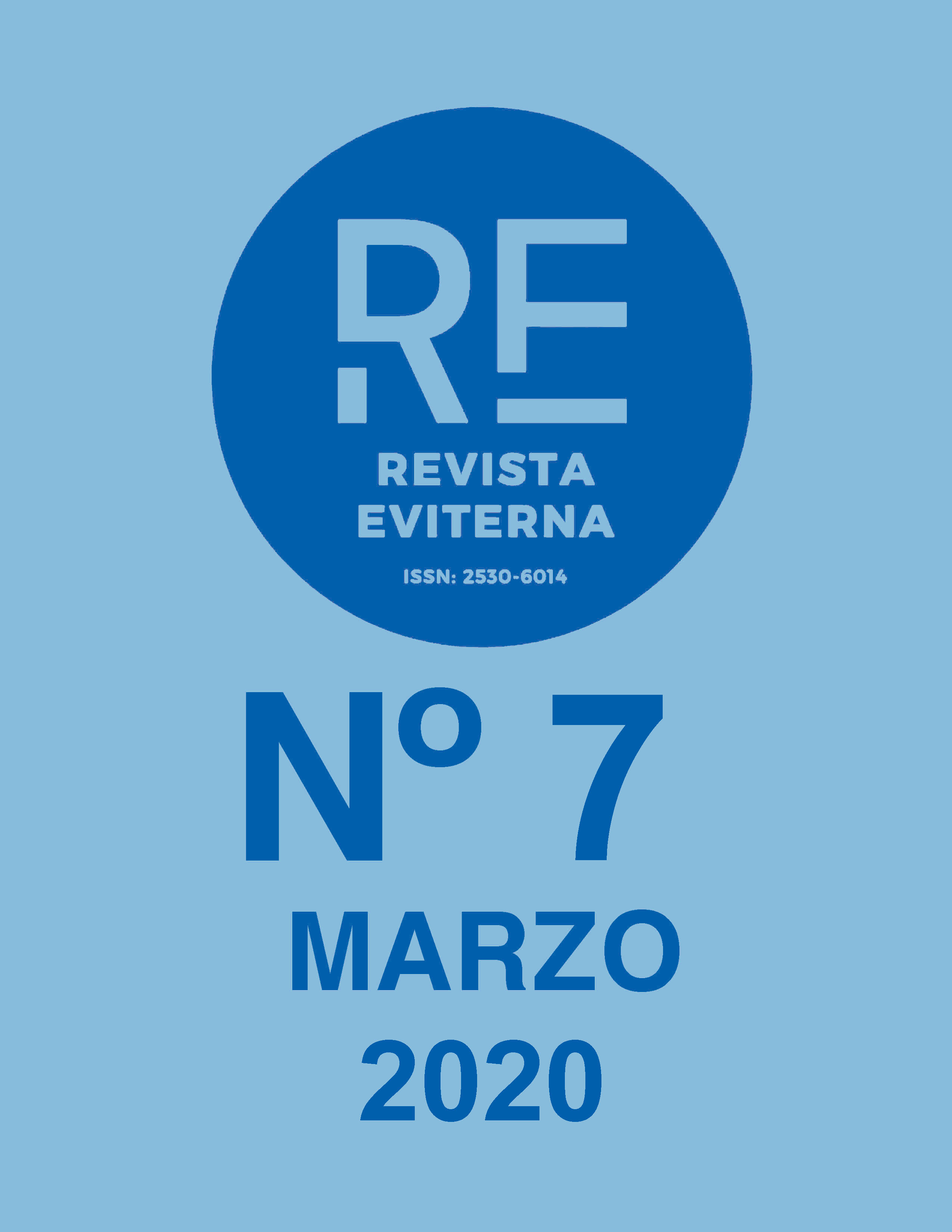El bildunsgroman dominicano femenino como texto antropológico de conocimiento. Julia Álvarez y la experiencia migrante en los Estados Unidos
DOI:
https://doi.org/10.24310/Eviternare.v0i7.8370Palabras clave:
Literatura dominicana; literatura y mujer; literatura de género; migración y literatura; literatura antropológicaResumen
Los grandes éxodos humanos que acaecieron entre las tres islas que conforman el Caribe hispano (Cuba, Puerto Rico y República Dominicana) y los Estados Unidos a lo largo del segundo decalustro del siglo XX originaron una territorialización caribeña de presencia significativa en este último. De esta forma, comenzaron a aparecer textos ocupados en testimoniar los procesos sociológicos propios de la reciente migración y, a su vez, una tipología literaria distintiva y centrada en describir con detalle las aristas del desplazamiento exclusivamente femenino. Así surge How the García Girls lost Their Accents(1991), de la autora domínico-americana Julia Álvarez, que se ha erigido con el paso del tiempo como obra canónica del destierro dominicano femenino en los Estado Unidos. No obstante, lejos de limitarse a ocupar un lugar dentro del corpusartístico de migración femenina, la obra bien puede ser considerada como un texto antropológico de conocimiento al centrarse con exclusividad en la recepción de la mujer dominicana que, además, actúa a dos niveles: la génesis testimonial y el interés comercial. El artículo se propone, pues, analizar la obra de Álvarez como texto de divulgación antropológica siguiendo las anotaciones del profesor australiano Joel S. Khan.
Descargas
Métricas
Publicación Facts
Perfil de revisores N/D
Información adicional autores
Indexado: {$indexList}
-
Indexado en
- Sociedad Académica/Grupo
- N/D
- Editora:
- Universidad de Málaga
Citas
Álvarez, Julia. (1992[1991]). How The García Girls lost Their Accents. Nueva York: Plume Printing.
Bergad, Laid y Herbert S. Klein (2010). Hispanics in the United States. A Demographic, Social, and Economic History, 1980-2005, Estados Unidos, Cambridge University Press.
Dedeluze, Gilles y Claire Parnet (2007 [1977]). Dialogues II. Nueva York: Columbia University Press.
García, Cristina (1992). Dreaming in Cuban. New York: Ballantine Books.
Khan, Joel (1995).Culture, Multiculture and Postculture. Londres: SAGE Publications
Luis, William (1997). Dance Between Two Cultures: Latino Caribbean Literature Written in the United States. Nashville: Vanderbilt University Press.
- (2006). “Literatura latinoamericana (hispano-caribeña) escrita en los Estados Unidos”. Historia de la literatura hispanoamericana II. El siglo XX. Madrid: Gredos.
Martínez Gutiérrez, Josebe (2002). Las intelectuales de la Segunda República al exilio. Madrid: Daneyu.
Melgar Pernías, Yolanda (2012) Los Bildungsromane femeninos de Carmen Boullosa y Sandra Cisneros. Mexicanidades, fronteras, puentes. Wodbridge: Tamesis.
Mohr, Nicholasa (1973). Nilda. Huston: Arte Público Press
Ortiz Cofer, Judith (1986). Peregrina. Golden: Riverstone Press of the Foothills Arts Center.
Ortiz, Fernando (1983 [1940]). Del fenómeno social de la “transculturación” y de su importancia en Cuba. Contrapunteo cubano del tabaco y del azúcar. La Habana: Editorial de Ciencias Sociales.
Trupe, Alice (2011). Reading Julia Álvarez.Santa Bárbara: ABC-CLIO.
Descargas
Publicado
Cómo citar
Número
Sección
Licencia
Todos los contenidos publicados en Revista Eviterna están sujetos a la licencia Creative Commons Reconocimento-NoComercia-Compartirigual 4.0 cuyo texto completo puede consultar en <http://creativecommons.org/licenses/by-nc-sa/4.0>

Se pueden copiar, usar, difundir, transmitir y exponer públicamente, siempre que:
- Se cite la autoría y la fuente original de su publicación (revista, editorial y URL de la obra).
- No se usen para fines comerciales.
- Se mencione la existencia y especificaciones de esta licencia de uso.
Los derechos de autor son de dos clases: derechos morales y derechos patrimoniales. Los derechos morales son prerrogativas perpetuas, irrenunciables, intransferibles, inalienables, inembargables e imprescriptibles.
De acuerdo con la legislación de derechos de autor, Revista Eviterna reconoce y respeta el derecho moral de los autores/as, así como la titularidad del derecho patrimonial, el cual será cedido a la Universidad de Málaga para su difusión en acceso abierto.
Los derechos patrimoniales, se refieren a los beneficios que se obtienen por el uso o divulgación de las obras. Revista Eviterna se publica en open access y queda autorizada en exclusiva para realizar u autorizar por cualquier medio el uso, distribución, divulgación, reproducción, adaptación, traducción o transformación de la obra.
Es responsabilidad de los autores/as obtener los permisos necesarios de las imágenes que están sujetas a derechos de autor.







12.png)



